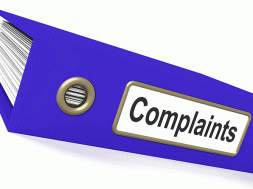
Academic Operations – 100% Compliant 24/7/365
By George Mikluscak, Vice President-Academic Compliance, West Virginia Junior College
Designing, developing and implementing a quarterly audit system for seven campuses including the online division is the primary focus for me as the Vice President of Academic Compliance. Although responsible for conducting audits at the campus locations, the most important aspects of my position are achieving synergy, buy-in and accountability at the front lines through campus leadership.
Our organization consists of seven campuses in three states. United Career Institute has locations in Mt. Braddock and Irwin, Pennsylvania. West Virginia Junior College has locations in Morgantown, Bridgeport, and Charleston, West Virginia. Ohio Valley College of Technology has a location in East Liverpool, Ohio.
The quarterly audit system was implemented in 2015. Approximately one year after implementation, the decision was made to transition to a new accreditor. While transitioning from one accreditor to the other, six of our campuses had to undergo an accreditation visit from the current accrediting body. After completing the current accreditation visit, the institutions had to turn around and complete the initial grant accreditation with the new accrediting body.
The quarterly audit system proved invaluable to the success of those visits.
Since 2015, our institutions have completed 12 total accreditation/re-accreditation reviews. Seven resulted in zero citations. Five resulted in minor clerical and/or non-academic citations. In 2019, four of the seven campuses once again completed re-accreditation reviews, all resulting in zero citations.
A quarterly audit system is a simplistic approach to maintaining compliance of academic operations. However, it is essential that a few items be in place in order for the system to work properly and efficiently. The first component is creating the right mindset to re-establish the perception of accreditation and re-accreditation visits. The mindset to gain buy-in from the front line members of campus leadership to diffuse the perception of “us vs. them” is imperative. Realizing, that to operate a great organization, the interactions of state and accreditor are vital as each review provides enhancement to daily campus operations. It is imperative to make a conscious effort to embrace the opportunity. Establishing a winning campus culture is the key to long-term success. It is equally important to coach up your academic team. One way to do this is to have clearly defined roles and to ensure that you have the right person in the right position. Once everyone understands roles and responsibilities, confusion is reduced and ease of operations is established regarding who is accountable for what.
We have found that there are three key elements in creating a winning campus culture – buy-in, accountability, and follow-through. The first step in creating buy-in is to demonstrate the benefit to employees. Although there will be initial work in designing, organizing and implementing the quarterly audit system, once constructed it will reduce overall workload through even distribution. Second, it is important to identify how the new process will overcome current deficiencies, making the campus more productive and efficient. Last, it is important to involve campus leadership (Campus President, Academic Dean, Program Directors, etc.). Earning leadership buy-in will create a smoother transition when implementing the process to campus personnel.
Accountability is achieved when clear roles, a team approach, and individual ownership is present.
Employees tend to struggle when roles and responsibilities are not clear. Removing as much confusion as possible is an important first step. Creating a team-oriented atmosphere with individual ownership supports the premise that we are all working towards the same goal. Providing clear roles and accountability for specific functions, elements and actions lines creates efficiency and maintenance of the quarterly audit system. The expectation of evaluation drives improvement and accountability by allowing employees to be honest with what they knew, what they thought, and what they did or did not do. In accountable organizations, no one should expect to fly under the radar. Fostering a mindset that seeks feedback, provides an understanding of how decisions are made and inevitably drives a motivation to improve the campuses’ educational craft is crucial.
Follow-through can be achieved by ensuring three simple rules. Rule 1: Establish clear deadlines and hold true to them. By establishing deadlines, accountability is constructed. Rule 2: Inspect what you expect, promotes a culture of accountability. If you expect something to be done, inspect it on a consistent basis. Not only will this assist in the timely completion of tasks and projects but it will provide an opportunity for feedback and guidance, resulting in a polished final product. Rule 3: Remain consistent. There is no quicker way to undo the critical components of buy-in and accountability than to be inconsistent with deadlines and expectations.
A quarterly audit system is a simplistic approach to achieving compliance within academic operations. The process and documentation are easily adaptable to fit the needs of the campus. The quarterly audit system can be tailored to align with current state licensing boards and accreditors.
The quarterly audit process is defined by four simple steps.
- Establish campus meeting dates.
- An internal audit is performed by the appropriate campus personnel.
- A formal audit is conducted by the Vice President of Academic Compliance.
- Schedule follow-up audits/visits when necessary.
Starting at the beginning of the calendar year, contact each campus to establish meeting dates for the first quarter audit. Each quarter, thereafter, follow the same process to ensure that campus leadership will be both available during the formal audit and have enough time to conduct their own internal audit. After the meeting dates have been established and prior to conducting the first formal audit, the Campus President (Campus Administrator) will confirm that the quarter’s audit checklist is in compliance. This process of confirmation assists in a few key areas. Although, the items should be internally reviewed on a consistent and regular basis, this does not always occur. It provides the Campus President (Campus Administrator) and leadership team, at a minimum, an opportunity to perform a cursory review. Based on the findings of the formal audit, comparisons to the previous year, and previous quarter audit, it will become evident if items are being reviewed throughout the year or done last minute. Last, a formal audit is conducted, findings reported, and follow up audits/visits scheduled.
Our organization is accredited by the Accrediting Bureau of Health Education Schools (ABHES). The quarterly audit template that is followed includes items specific to what is required by ABHES. However, and as mentioned, as long as the appropriate campus culture is in place, the audit system is easily adaptable to fit the requirements of any accreditor or state licensing body.
The first quarter audit includes the following items: program advisory board meeting minutes, faculty meeting minutes, in-service training, and program effectiveness plans (PEP).
The meeting minutes are reviewed to ensure that the frequency of the meetings are conducted according to campus policy. Additionally, agenda, attendance, and minutes are also reviewed. In-service documentation is reviewed to confirm that the in-service plans are scheduled for the entire year and that the overview, attendance, and any other relevant supplements are properly documented. The PEP’s are reviewed to ensure the accuracy of data and analysis. Additionally, survey data, specifically methods of distribution and response rates are scrutinized to ensure outcomes are achieved.
The second quarter audit includes student files, faculty files, and staff files. A sample of student files is chosen for review including active students, graduates, students with transfer credits, student who took credit-by-examination tests, students who participated in directed studies, and students on academic progress or SAP. All faculty files are reviewed. Items that are reviewed include signed and annually updated ABHES faculty datasheets, signed job descriptions, resume, evidence of certificates, diplomas and/or degree, annual performance reviews, classroom instruction for new instructors completed within 30 days, professional development, and in-service training. All staff files are reviewed. Items that are reviewed include a signed job description, resume, evidence of certificates, diplomas and/or degree, and annual performance reviews.
The third quarter audit includes placement files, externship/clinical files, affiliation agreements and site viability forms. A sample of graduate placement files are chosen for review and includes placement file checklist, placement verification form, and applicable supporting documentation. A sample of the student externship files is chosen for review and includes guidelines and expectations, affiliation agreement, viable learning site evaluation, timesheet and competency log, and evaluation. Additionally, a review is conducted of the current externship/clinical agreements to ensure that all are current and readily available should an unannounced accreditation visit occur.
The fourth quarter audit includes software licenses, equipment inventory, state correspondence documents, admission/recruitment staff training materials and scripts, published grievance and complaint file, state license, occupancy permit, fire/safety inspection, Eligibility and Certification Report (ECAR), and Program Participation Agreement (PPA). The software licenses and equipment inventory are reviewed to ensure that the documentation is both organized and readily accessible. The remaining items are reviewed to confirm that each is up-to-date.
The final academic item that is reviewed is the syllabi. Syllabi are reviewed for compliance at any point during the year that a change is initiated. Several years ago our institutions made the decision to standardize our curriculums. Standardized sections of the syllabus that cannot be changed without a review by all of the campuses that offer that particular course include course code, course name, prerequisites, course description, course objectives, and weekly objectives. However, should a campus decide to make a change to a syllabus, beyond the aforementioned areas, they would simply pull the syllabus from the organization’s intranet site, make necessary changes, and submit for a compliance review.
In addition to the quarterly audit system, each campus is provided an updated and current accreditation study guide. By regularly reviewing the information provided in the study guide, faculty and staff are always prepared for re-accreditation and unannounced accreditor visits. The study guide is a condensed version of the campus Self-Evaluation Report or SER. In addition to providing guidance to faculty and staff as to how their campus aligns with accreditation standards, it also provides an opportunity to emphasize areas that tend to be a point of interest for accreditation review teams. Additional support items that are provided to the campuses include meeting room materials setup and help list. Included with these items are instructions on how to set up documentation binders and overall room setup. Last, a meeting room materials checklist is also provided to the campuses. The checklist mirrors the setup and help list but provides a functioning format that allows the appropriate campus personnel to track who is responsible, due date, status, and notes.
In closing, I would like to provide some commentary from Scott Rogers, the Campus President at Ohio Valley College of Technology (OVCT). Mr. Rogers provides a tremendous synopsis of the importance of the quarterly audit system.
Mr. Rogers states that the goal of OVCT is to be “100% compliant with all laws rules and regulations and to be accreditation review ready at all times.
Accreditation and state regulatory compliance should not be an event that occurs every few years. Rather, it is a culture that needs to be lived every day by every person on campus. It should permeate every aspect of your operations, it should be non-negotiable, and of course it requires the buy-in of everyone on the team. It is critical to put into place an annual plan that is managed on a continuous basis throughout the year with regular benchmarks. The [quarterly audit] system has proved invaluable. It spreads the workload evenly over available staff, time and resources and it works. Having successful state and accreditation visits builds your team’s confidence and reinforces buy-in and follow through because the team will want to do it again. Great people want to stay part of a great team. Have a plan, stick to it, audit your progress, and that’s how you get to Rock Star status in academic operations.”
GEORGE MIKLUSCAK is the Vice President of Academic Compliance for West Virginia Junior College. George attained his undergraduate degree from Slippery Rock University. He continued his academic pursuits at California University earning his master’s degree and then completed his doctorate from the University of Phoenix. Over the past decade, George has devoted his efforts and focus on academic compliance and support. Through his position he assisted in the development of policies and procedures implemented across seven campuses including a distance education campus which are located in three different states, complying with state, national and programmatic accreditation requirements. Ensuring compliance with rules, regulations, policies and procedures provide each campus with quarterly audits and personalized training. George Mikluscak manages the enhancement of existing and development of academic programs.
Contact Information: George Mikluscak, Ed.D. // Vice President-Academic Compliance // West Virginia Junior College // 724-208-1923 // gmikluscak@wvjc.edu











